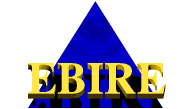
(click on titles for abstract)
Claude Alain, Rotman Institute, University of Toronto, Toronto, Canada Workshop Presentation: Neural concomitant of vowel segregation
|
| Guy Brown, Department of Computer Science, Sheffield University, Sheffield, United Kingdom Workshop Presentation: Auditory models for speech processing in noisy and reverberant onditions
|
| Douglas Brungart, Air Force Wright Patterson Research Laboratory, Dayton, Ohio Workshop Presentation: Informational and energetic masking effects in multitalker speech perception
|
| Peter Cariani, Department of Otology and Laryngology, Harvard Medical School, and Eaton Peabody Laboratory of Auditory Physiology, Massachusetts Ear and Eye Infirmary, Boston, Massachusetts Workshop Presentation: Recurrent timing nets for F0-based sound separation
|
| Alain de Cheveigné, Centre National de la Recherche Scientifique and Institut de Recherche et Coordination Acoustique/Musique, Paris, France Workshop Presentation: The cancellation principle in auditory scene analysis
|
| Martin Cooke, Department of Computer Science, Sheffield University, Sheffield, United Kingdom Workshop Presentation: Glimpsing speech
|
| Chris Darwin, Department of Psychology, University of Sussex, Brighton, United Kingdom Workshop Presentation: Speech segregation: problems and perspectives
|
| Pierre Divenyi, Speech and Hearing Research, VA Northern California Health Care Systems and East Bay Institute for Research and Education, Martinez, California Workshop Presentation: Masking the information in multi-stream speech-analogue displays
|
|
Workshop Presentation: Separation, localization, and comprehension of multiple, simultaneous speech signals by humans, machines, and human-machine systems
|
| Dan Ellis, Department of Electrical Engineering, Columbia University, New York, New York Workshop Presentation: Sound, mixtures, and learning
|
| Tom Huang, Department of Electrical and Computer Engineering and Beckman Institute, University of Illinois at Urbana-Champaign, Champaign, Illinois Workshop Presentation: Interplay between audio and visual scene analysis
|
| Hideki Kawahara, Faculty of Systems Engineering, Wakayama University, Wakayama, and Human Information Processing Research Laboratories, ATR, Kyoto, Japan Workshop Presentation: Underlying principles of a high-quality speech manipulation system STRAIGHT and its application to speech segregation
|
Te-Won Lee, Institute for Neural Computation, University of California, San Diego, La Jolla, California Workshop Presentation: Speech Signal Understanding Using Graphical Models
|
Bhiksha Raj, Mitsubishi Electric Research Laboratory, Cambridge, Massachusetts Workshop Presentation: Maximum-likelihood multi-channel speaker separation using factorial Hidden Markov Models
|
| Sam Roweis, Department of Computer Science, University of Toronto, Toronto, Canada Workshop Presentation: Factorial models and refiltering for speech separation and denoising
|
| Malcolm Slaney, IBM Almaden Research Center, San Jose, California Workshop Presentation: Wither CASA?
|
Paris Smaragdis, Mitsubishi Electric Research Laboratory, Cambridge, Massachusetts Workshop Presentation: Exploiting redundancy to construct listening systems
|
| Richard Stern, Department of Electrical and Computer Engineering, Carnegie Mellon University, Pittsburgh, Pennsylvania Workshop Presentation: Signal separation motivated by human auditory perception
|
Elyse Sussman, Department of Otolaryngology, Yeshiva University, Albert Einstein College of Medicine, New York, New York Workshop Presentation: Auditory scene analysis: Examining the role of nonlinguistic auditory processing in speech perception
|
DeLiang Wang, Department of Computer and Information Science and Center for Cognitive Science, Ohio State University, Columbus, Ohio Workshop Presentation: On computational objectives of auditory scene analysis |
